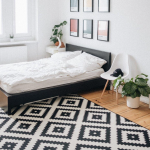Factors To Consider Before Buying A Hoodie
Hoodies are in such high demand that they have a designated time of year, also known as hoodie season. Individuals become enthusiastic about them. There’s no comparison to a cozy and fresh sweatshirt with a hood. Consequently, personalized sweatshirts with hoods are an excellent and unforgettable approach to advertise your brand, dress up your team, generate substantial merchandise sales, or simply thank your loved ones and supporters with some comfortable and cuddly warmth. However, with numerous competing labels and countless designs available, it’s difficult to determine where to start.
Pull-over Vs Zip-up
The two most favored variations of hoodies are pull-overs and zip-ups. The primary difference between these two variations is the method of wearing them (hence the names). Zip-up hoodiescome with front pockets, whereas pull-over hoodies have one large front pocket. Most of the hoodies come in these two variations.
Certainly, if you browse through the internet, you may come across quarter-zip hoodies, side-zips, button-downs, sleeveless hoodies, or feather fringes but these variations are typically uncommon and particular to a specific designer or a brand which has gone rogue.
Hoodie Fabric
Hoodies, like T-shirts, are produced in a variety of fabrics and combinations. The most popular choice is cotton, which is soft and traditional. The ever-evolving advancements of 100% polyester offer moisture-wicking quality. Additionally, there are 50-50 cotton-poly blends and tri-blends, which offer best of cotton and polyester fabrics.
If you’re looking for the softest hoodie possible, sweatshirt fleece is a fabric type that can be made from different materials, including those mentioned above. It features torn and brushed yarn loops on the inside to create a frayed and fuzzy texture. This technique not only results in a super-soft feel but also provides added warmth. However, if you’re looking for something even softer than fleece, sponge fleece is the way to go. It has a name that sounds as soft as it feels. Unfortunately, it’s not as absorbent as terry.
French terry is a much light-weight fabric than fleece and not as soft. The yarn loops are left intact, resulting in a less fuzzy texture. Although it’s not as soft as fleece, French terry is more absorbent and breathable. It’s even used to make towels because of its high absorbency. Additionally, being a lightweight material, it can help keep you cool.
Customizing a hoodie
A sublimation blank hoodies is akin to a canvas. This adaptable attire offers several potential locations for prints and customization techniques, although certain limitations apply. For instance, front side printing of sweatshirts is restricted by the presence of a front pocket, if any, while front side printing of zippered sweatshirts is restricted by the zip. Although most limitations pertain to print locations, occasionally they may be due to the product’s construction, such as fabric or seams. Let’s examine the print zones, printing techniques, and some constraints specific to personalizing hoodies.
Hoodie sizes
In general, the dimensions of hoodies will correspond to the T-shirt sizes that you normally wear. Hoodies made of 100% cotton are more prone to shrinkage than those made of polyester or a blend of materials. However, there are some cases where this may not hold true, particularly regarding specific brands, designs, fits, and divergences between men’s and women’s styles. It’s advisable to review the product specifications and compare measurements to ascertain if the sizing aligns with standard measurements.









